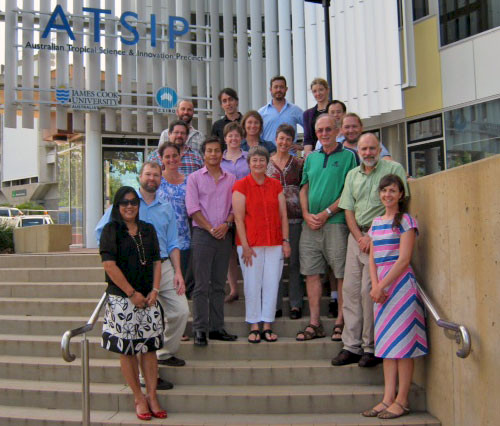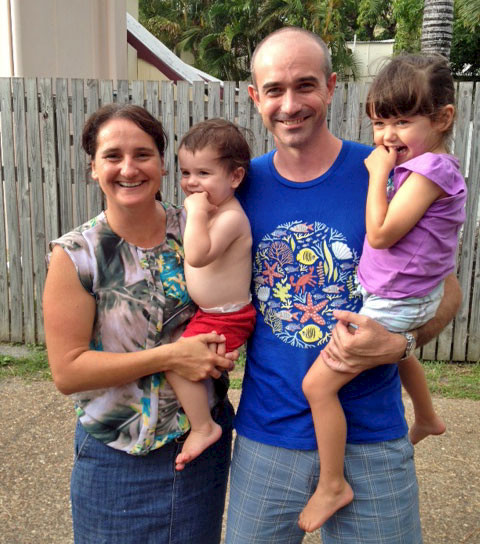Developing a climate change resilience index for the Great Barrier Reef: Part 2
Bill Dennison ·Following a day of scientific talks where the various climate change resilience indicators were presented, we had dinner at a nice restaurant on The Strand, a popular Townsville promenade overlooking the harbor. On the second day, we sketched a few conceptual diagrams, generated a prototype reef resilience index and storyboarded a trifold document. In addition, all of the scientists drafted text and Emily Saeck was able to quickly produce a first draft of the trifold and we conducted a plenary review and editing of the text, figures and diagrams. It was nice to be able to walk away from the workshop with a complete draft of the workshop summary in the form of a trifold.

There are various threats to the Great Barrier Reef that have been studied for many years like crown-of-thorns seastars, thermal bleaching, and cyclones; but the emergence of ocean acidification as a major threat to the Great Barrier Reef is cause for concern. Unlike bleaching, crown-of-thorns and cyclones that are episodic and often localized, ocean acidification is chronic and widespread. Ocean acidification is also cumulative, with little opportunity for refuge for affected corals.
Defining the word 'resilience' is a topic often discussed by ecologists. Our approach to defining the word is to separate the elements of resilience into a) resistance to change and b) recovery from disturbance and creating a conceptual diagram which contrasts less resilient from more resilient. In this way, producing a conceptual diagram helps to clarify as well as communicate the term 'resilience'.
A bonus of this workshop was that I was able to visit with two former Marine Botany members following the workshop. Catherine Collier, seagrass scientist at James Cook University, and her husband Dieter Tracey, who worked with me producing the book 'Where river meets sea: Exploring Australia's estuaries (2004)', live in Townsville with their very cute children Amelia and Luca. Dieter showed me a science communication project that he is working on with another Marine Botany group member, Simon Albert. Both Cath and Dieter are very talented science communicators.

I wrote a poem about the workshop which is as follows:
Keeping the Great Barrier Reef Great
by
William C. Dennison
It's warming up in the sea
We can't burn fuel for free
It's causing us problems, you see
And it's getting more caustic every day
Volcanic seeps are showing us the way
Pink crusts and pink sands will go away
But along will come bright green seagrass
Generating some big plant biomass
Creating nice gardens for the wrasse
If we keep on going at this rate
The Great Barrier Reef won't be great
A truly awful, terrible fate
Using mass specs and an underwater submarine
The scientists are really very keen
To make future reefs a better scene
Developing an index for all to see
Indicators and thresholds are the key
To climate resilience and habitat complexity
Adapting to climate is a challenge supreme
We need lots of good tools and a great team
Using science to solve problems is not just a dream
We gathered together on the campus of JCU
We gave ourselves various chores to do
So that we can create something brand new
We can evaluate with good data not just belief
To avoid setting ourselves up for grief
Producing a climate report card for the Great Barrier Reef.
About the author
Bill Dennison

Dr. Bill Dennison is a Professor of Marine Science and Vice President for Science Application at the University of Maryland Center for Environmental Science.